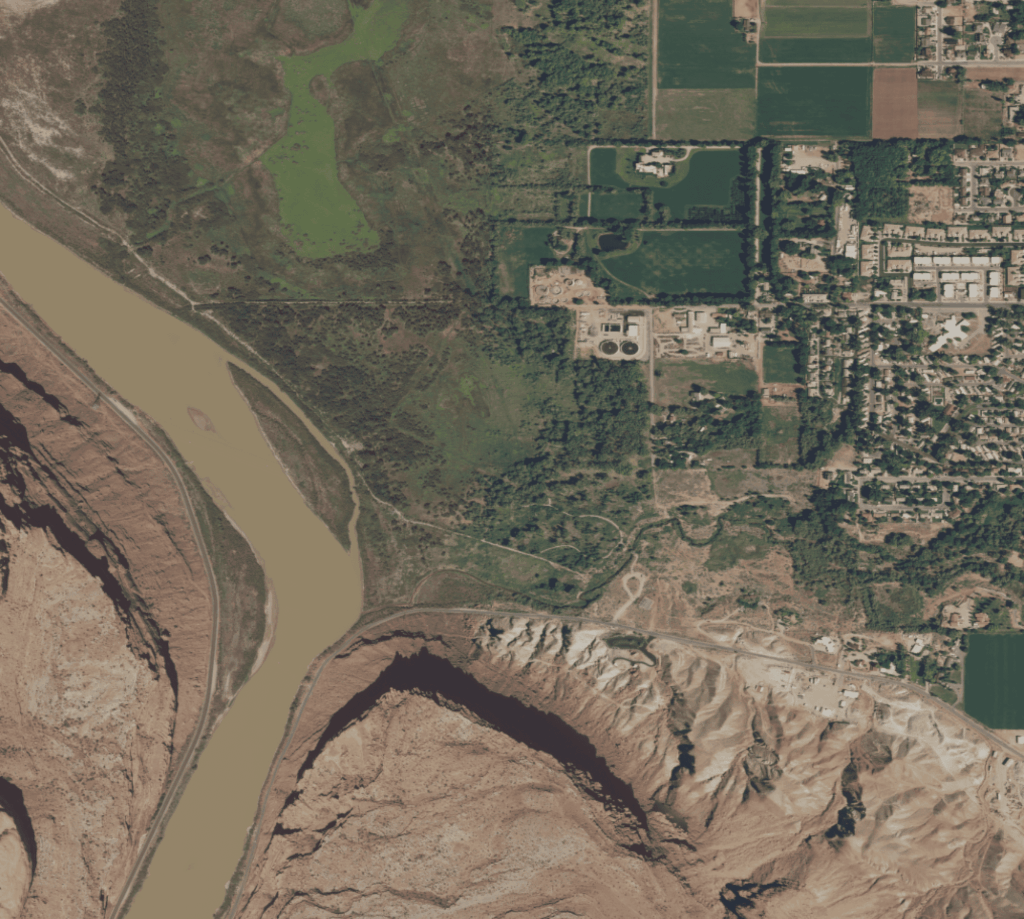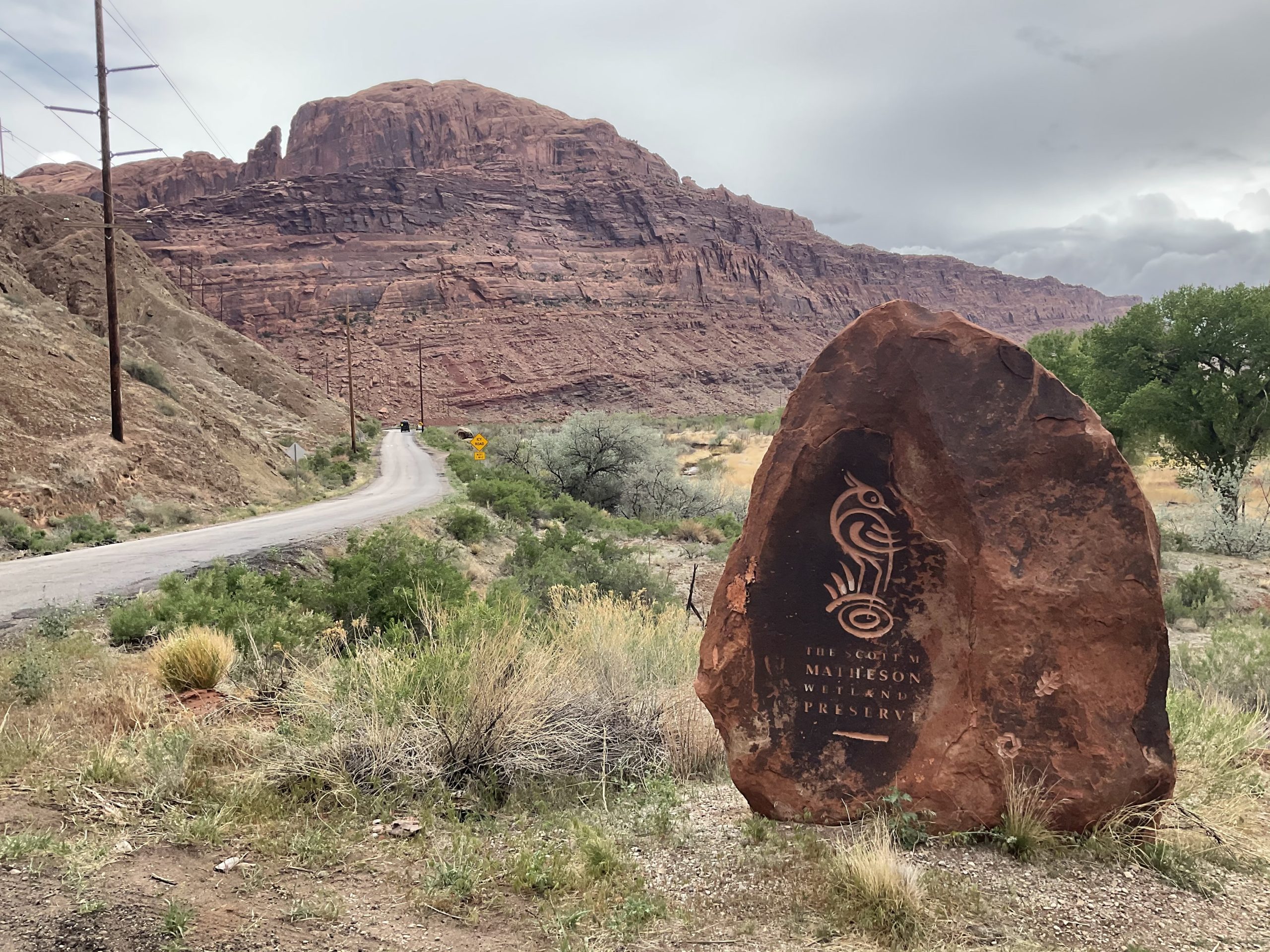Some information may be outdated.
Water is always top of mind in semi-arid climates like Grand County’s, especially in the face of extended regional drought and with the prospect of ongoing development. At their Oct. 18 meeting, Grand County commissioners voted to help fund two projects designed to deepen understanding of the hydrology of the Moab valley by studying the wetlands contained in the Scott and Norma Matheson Wetlands Preserve.
Kathryn Ladig of the Utah Geological Survey’s Groundwater and Wetlands Program introduced the first of the studies.
“We’re looking at developing a water budget for the wetlands and refining studies that have been done in the past, adding a lot more detail,” Ladig said. The project will also examine a brine layer, likely from the Paradox geological layer, that lies under the fresh groundwater, as well as map vegetation in the preserve. Ladig emphasized that the information collected would be relevant to Grand County.
“We’re looking at two of the different aquifers that you guys rely on—the Glen Canyon and the Valley Fill—looking at how surface water is interacting with groundwater through there. And as we’re building this water budget that’s specific to Matheson Wetlands, there are pieces of that that are going to apply further into Spanish Valley.”
Marc Stilson, a regional engineer for the Utah Division of Water Rights, chimed in to emphasize the importance of gathering more information on the wetlands.
“To answer the question about, ‘How does this help us understand groundwater rights and future development on those rights?’—it’s a critically important piece,” he said. “The 2019 USGS study was a big, comprehensive picture, but they didn’t go into detail and they left us with a lot of questions that still need to be answered. And one of them is down around the wetlands.”
Water currently being discharged into and passing through the wetlands, Stilson explained, represents water in the hydrologic system that could potentially still be available for development—but it’s not well understood.
“Understanding that dynamic, and whether or not that water can be pulled out without harming the wetlands, is a very critical piece of information that we need as applications come in front of us as development moves forward in Moab and Spanish Valley,” Stilson said.

The total budget for the project in 2023 is $139,396, with funding coming from UGS, The Nature Conservancy, the Utah Division of Wildlife Resources, and the Colorado River Authority of Utah. Project representatives asked Grand County to contribute $22,111 toward the project, which commissioners voted unanimously to do, adding an additional $12,000 of expedited funding to continue funding the project the following year.
Tom Marston, a hydrologist with the U.S. Geological Survey at the Utah Water Science Center, introduced a proposal for another study looking at salinity in the Colorado River and the Matheson Wetlands. The study would build on previous salinity data collected in the Colorado River. The project also includes a “pump test,” which would test how susceptible the freshwater/brine interface is to removing water from the freshwater aquifer.
Stilson weighed in again. “What Tom has proposed again goes to the heart of the question, ‘If we develop more freshwater groundwater up the valley, is it going to somehow impact the wetlands? If we remove more of the freshwater layer that’s sitting on top of the brine, what’s going to happen?’ We don’t know the answer to that question,” he said.
If stakeholders (including Grand County, San Juan County, Moab City, and the Grand Water and Sewer Service Agency) want to continue to develop water resources in the valley, they need to understand the potential effects of that development.
“There’s a limited amount of groundwater left to use,” Stilson said. “If the major water users… in the valley want to continue to develop it, we would like to do so in a manner that doesn’t negatively impact the wetlands and other water users. And the Colorado River, for that matter.”
The commission voted to approve contributing $19,362 toward the study. Marston is looking for $45,000 in cooperative match funding, and Grand County commissioners hope that other entities that will benefit from the information gathered, such as San Juan County, will follow their lead in contributing.
Appreciate the coverage? Help keep local news alive.
Chip in to support the Moab Sun News.





